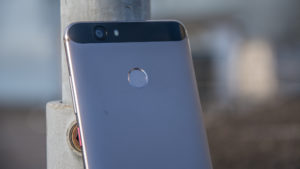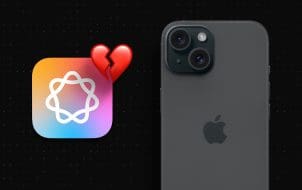Huawei, as a relative newcomer to the smartphone top table, is in an enviable position. The advantage it has over its rivals? The smartphones the company has been pushing out have been on a steady upward curve.
It’s the advantage of the newcomer, but it means that while Samsung, Apple, Sony and HTC continue to – in some respects – tread water, Huawei’s phones are visibly improving with each iteration, and at a competitive price point, too. It can’t last forever, of course, but for the moment, the Huawei Nova continues that trend nicely.
READ NEXT: The best smartphones of 2016 – our top picks
Huawei Nova review: Design
The Huawei Nova launches alongside the Nova Plus, and as you’ve probably guessed, it’s the dinkier of the pair, although in this context the word “dinky” is relative. Still, fashions change, and as such, the 5in Huawei Nova feels as close to a typical smartphone as it’s possible to be.
That, of course, is not necessarily a bad thing. Huawei may not be the most fashionable brand, but there’s no telltale giveaway here that you’re not looking at a smart mid- to high-end smartphone. In style, it’s like a cross between an Apple product, circa iPhone 4 or 5, and the HTC One series – and neither of those are exactly ugly.
[gallery:2]The front is dominated by the screen, bookended by two black strips, all coated in Gorilla Glass. Turning the device over, things are charmingly minimalist. The back is smooth and metallic, with a black band at the top surrounding the rear-facing camera, and a small, circular indent for the fingerprint reader just below it.
The positioning of the fingerprint reader actually works well for me, and makes up for the lack of physical home button on the front. Whether it makes it any easier to unlock will vary from person to person, but I found it fast and accurate. You’ll have to pick up your phone to unlock it this way, though.
Finally, the Huawei Nova has a USB Type-C port in the bottom and all the advantages that brings. It also, of course, brings one big disadvantage: chances are you don’t have a whole load of compatible cables lying around.
[gallery:4]Huawei Nova review: Screen
The screen on the Huawei Nova is a 5in IPS panel, which has a resolution of 1,920 x 1,080. This might seem a tad on the low side in a world where every flagship phone seems to be offering 2,560 x 1,440 displays, but it’s still perfectly sharp, and its pixel density of 441ppi is way beyond Retina. In practice, it looks superb.
My initial gut feelings were backed up strongly by the screen tests we put the device through. Here it is compared to some recent Alphr favourites:
| Resolution | Brightness | sRGB gamut | Contrast | |
| Huawei Nova | 1,920 x 1,080 | 423.87cd/m2 | 100% | 1,491:1 |
| HTC 10 | 2,560 x 1,440 | 449.22cd/m2 | 99.8% | 1,793:1 |
| LG G5 | 2,560 x 1,440 | 354.05cd/m2 | 97.1% | 1,621:1 |
| Apple iPhone 7 | 1,334 x 750 | 540cd/m2 | 95.8% | 1,425:1 |
As you can see, the Huawei Nova more than holds its own – if you’re prepared to forgive the slightly lower resolution, and to be honest, on a 5in device, you definitely should. The key point here is that it’s the cheapest handset in the list by far, so we’re off to a very strong start. The (slightly larger) elephant in the room is the even cheaper OnePlus 3, the 5.5in AMOLED screen of which is also very good.
Huawei Nova review: Performance
It’s when it comes to measuring performance that things become a bit sticky. In day-to-day use, the Nova is a decent performer, as you’d expect considering its specifications. The Nova – and its bigger brother the Nova Plus – uses a 2GHz octa-core Qualcomm Snapdragon 625 chip, backed with 3GB of RAM and 32GB of storage on the side. That, you would imagine, would put it slap bang in the middle of the mid-range on performance.
Initially that was pure speculation, as our Huawei handset was locked down, preventing us from putting it through its benchmark paces. We now have an unlocked one and can reveal how it performs. Here it is again against a selection of similarly priced handsets:
|
Geekbench single core |
Geekbench multi core |
GFXBench Onscreen (native) |
GFXBench Offscreen (1080p) |
|
|
Huawei Nova |
843 |
2,982 |
10fps |
9.8fps |
|
OnePlus 3 |
2,371 |
5,416 |
47fps |
47fps |
|
Sony Xperia X Compact |
1,445 |
3,778 |
32fps |
15fps |
|
Samsung Galaxy A5 |
727 |
3,558 |
4.7fps |
4.7fps |
It’s not hugely happy reading for Huawei. The OnePlus 3 wipes the floor with it, at £10 cheaper, but then it does with most handsets. More damagingly, the Xperia X Compact is a significantly better performer for £20 more. In fact, the Huawei Nova has more in common with the Samsung Galaxy A5, which is a competent handset, but is available for just under £300.
In terms of stamina, the 3,020mAh battery held its own admirably well, giving us a final time of 13hrs 32mins in our video-playback test at a screen brightness of 170cd/m2. The average for smartphones is around the 11-hour mark, so while the Huawei Nova doesn’t come close to touching the Samsung Galaxy S7 Edge, which achieved a Herculean 18hrs 42mins, it’s certainly solid enough for most people’s use.
Likewise, the camera is no groundbreaker. It’s a 12-megapixel snapper, and image quality is adequate, but unlikely to set the world alight. Photographers may want to consider the Huawei Nova Plus at this point. Not only does it come with a 16-megapixel camera, it also boasts optical image stabilisation (OIS), something that’s conspicuous by its absence here.
The results are okay, lifted by some heavy image processing. There’s a little fuzziness when you zoom in, and colours feel a touch pale and washed out, but it will do the job. And as a superficial alternative, there are plenty of neat filters you can throw into the mix, including modes that allow you to capture light trails left by moving cars, or the flow of water.
The front-facing “selfie” camera, with its less demanding day-to-day role, fares better. At eight megapixels, it feels a touch like overkill, but for video calls and selfies, it doesn’t disappoint.
[gallery:1]Huawei Nova review: Verdict
Missing benchmarks notwithstanding, Huawei has presented us with a very likeable handset in the Nova. It’s attractive, seems zippy and responsive, has a bright, vibrant screen and solid battery life – and all for a not unreasonable £340.
Not unreasonable, that is, until you consider the great disrupter: the OnePlus 3. That’s the handset that currently sits proudly at the top of our best smartphones list, and while not quite offering the performance of our favourite flagships, it comes close at a fraction of the price. And, crucially, that price is £10 cheaper than the Huawei Nova’s.
That’s not really fair on the Huawei Nova, which offers solid value it itself, but nonetheless, it remains a tough sell by comparison. Still, if you find one on offer, you can rest assured you’ll be getting an attractive, high-quality handset that won’t let you down.
Disclaimer: Some pages on this site may include an affiliate link. This does not effect our editorial in any way.







